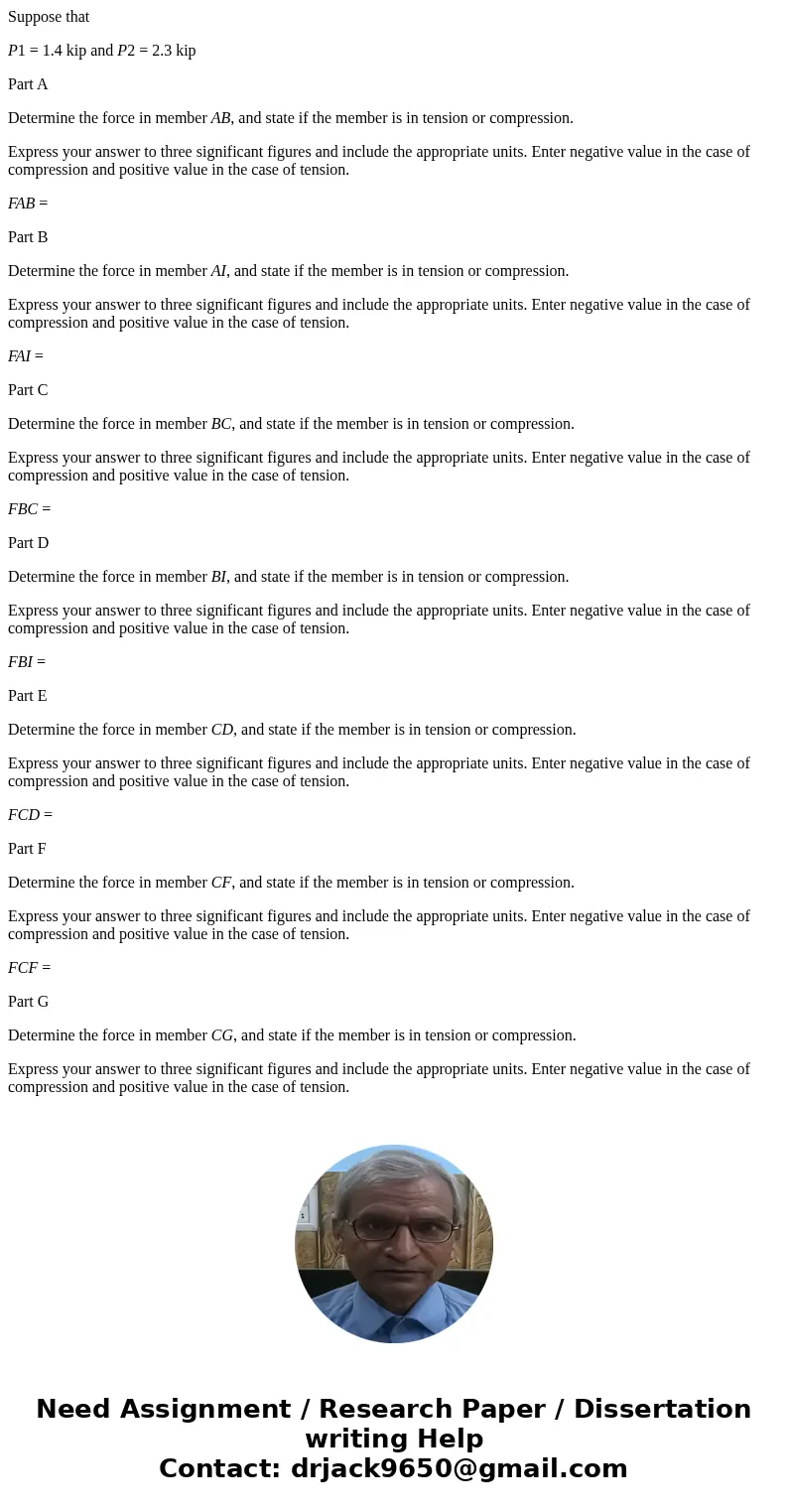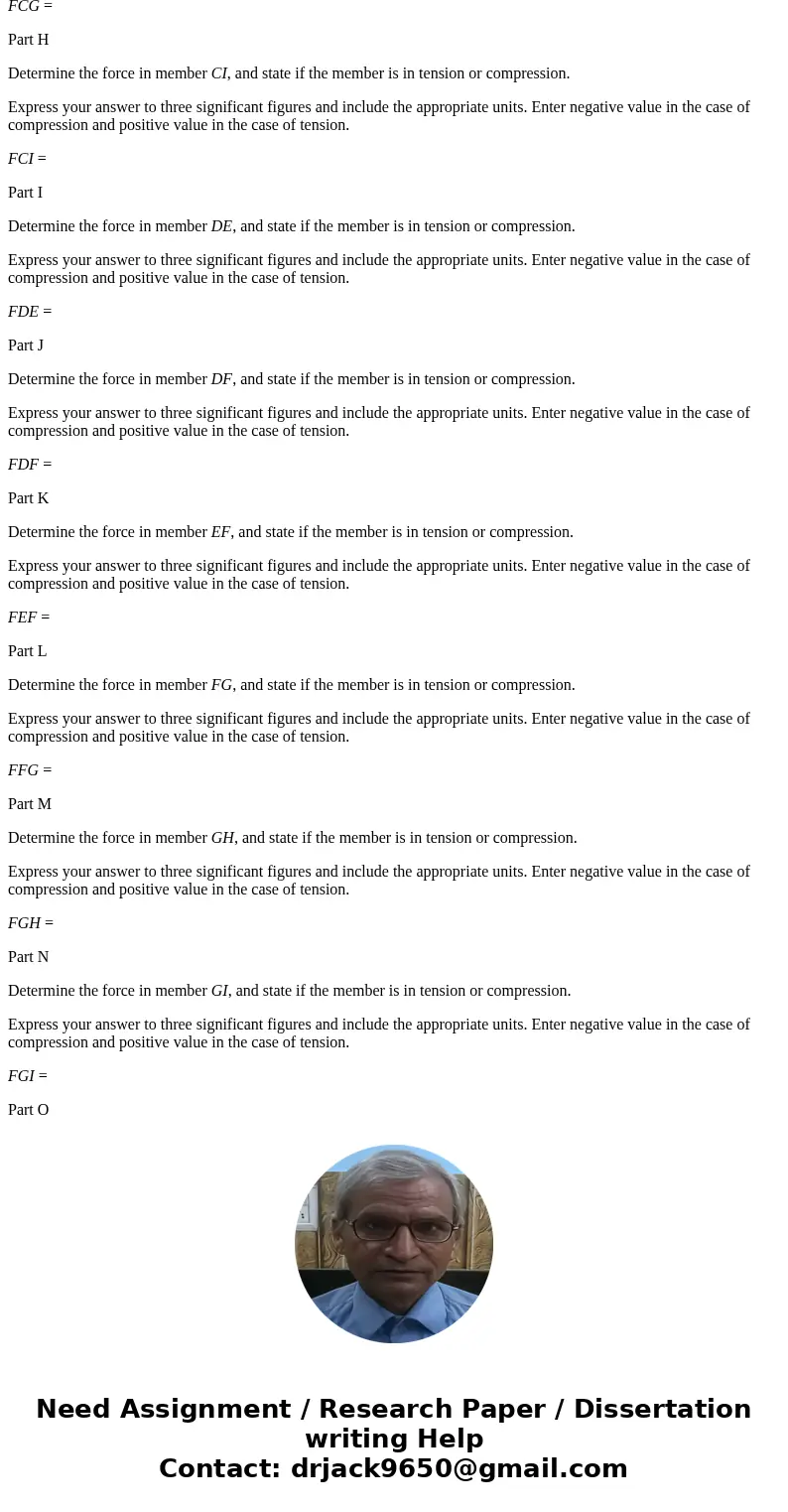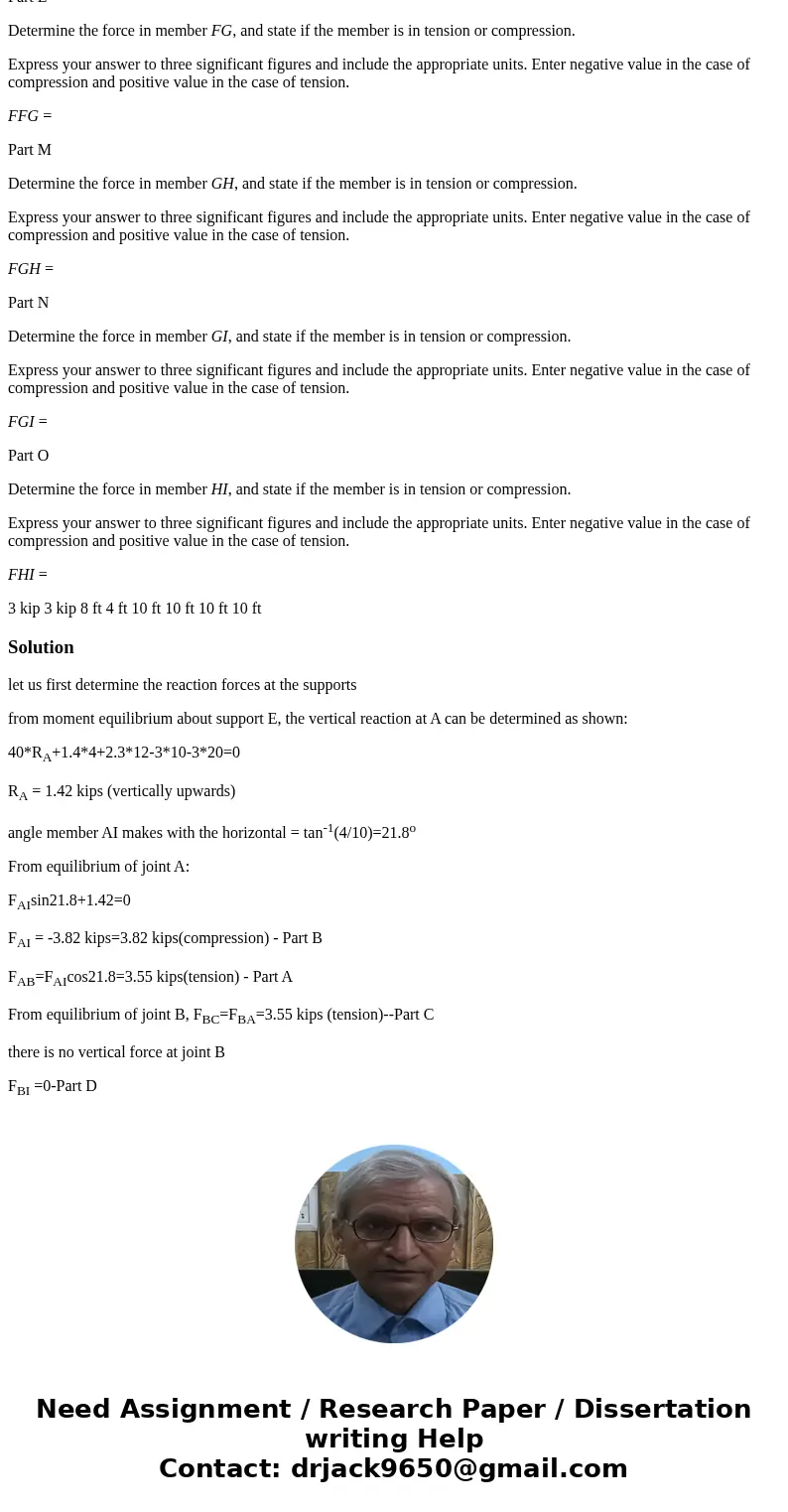Suppose that P1 14 kip and P2 23 kip Part A Determine the
Suppose that
P1 = 1.4 kip and P2 = 2.3 kip
Part A
Determine the force in member AB, and state if the member is in tension or compression.
Express your answer to three significant figures and include the appropriate units. Enter negative value in the case of compression and positive value in the case of tension.
FAB =
Part B
Determine the force in member AI, and state if the member is in tension or compression.
Express your answer to three significant figures and include the appropriate units. Enter negative value in the case of compression and positive value in the case of tension.
FAI =
Part C
Determine the force in member BC, and state if the member is in tension or compression.
Express your answer to three significant figures and include the appropriate units. Enter negative value in the case of compression and positive value in the case of tension.
FBC =
Part D
Determine the force in member BI, and state if the member is in tension or compression.
Express your answer to three significant figures and include the appropriate units. Enter negative value in the case of compression and positive value in the case of tension.
FBI =
Part E
Determine the force in member CD, and state if the member is in tension or compression.
Express your answer to three significant figures and include the appropriate units. Enter negative value in the case of compression and positive value in the case of tension.
FCD =
Part F
Determine the force in member CF, and state if the member is in tension or compression.
Express your answer to three significant figures and include the appropriate units. Enter negative value in the case of compression and positive value in the case of tension.
FCF =
Part G
Determine the force in member CG, and state if the member is in tension or compression.
Express your answer to three significant figures and include the appropriate units. Enter negative value in the case of compression and positive value in the case of tension.
FCG =
Part H
Determine the force in member CI, and state if the member is in tension or compression.
Express your answer to three significant figures and include the appropriate units. Enter negative value in the case of compression and positive value in the case of tension.
FCI =
Part I
Determine the force in member DE, and state if the member is in tension or compression.
Express your answer to three significant figures and include the appropriate units. Enter negative value in the case of compression and positive value in the case of tension.
FDE =
Part J
Determine the force in member DF, and state if the member is in tension or compression.
Express your answer to three significant figures and include the appropriate units. Enter negative value in the case of compression and positive value in the case of tension.
FDF =
Part K
Determine the force in member EF, and state if the member is in tension or compression.
Express your answer to three significant figures and include the appropriate units. Enter negative value in the case of compression and positive value in the case of tension.
FEF =
Part L
Determine the force in member FG, and state if the member is in tension or compression.
Express your answer to three significant figures and include the appropriate units. Enter negative value in the case of compression and positive value in the case of tension.
FFG =
Part M
Determine the force in member GH, and state if the member is in tension or compression.
Express your answer to three significant figures and include the appropriate units. Enter negative value in the case of compression and positive value in the case of tension.
FGH =
Part N
Determine the force in member GI, and state if the member is in tension or compression.
Express your answer to three significant figures and include the appropriate units. Enter negative value in the case of compression and positive value in the case of tension.
FGI =
Part O
Determine the force in member HI, and state if the member is in tension or compression.
Express your answer to three significant figures and include the appropriate units. Enter negative value in the case of compression and positive value in the case of tension.
FHI =
3 kip 3 kip 8 ft 4 ft 10 ft 10 ft 10 ft 10 ftSolution
let us first determine the reaction forces at the supports
from moment equilibrium about support E, the vertical reaction at A can be determined as shown:
40*RA+1.4*4+2.3*12-3*10-3*20=0
RA = 1.42 kips (vertically upwards)
angle member AI makes with the horizontal = tan-1(4/10)=21.8o
From equilibrium of joint A:
FAIsin21.8+1.42=0
FAI = -3.82 kips=3.82 kips(compression) - Part B
FAB=FAIcos21.8=3.55 kips(tension) - Part A
From equilibrium of joint B, FBC=FBA=3.55 kips (tension)--Part C
there is no vertical force at joint B
FBI =0-Part D



 Homework Sourse
Homework Sourse